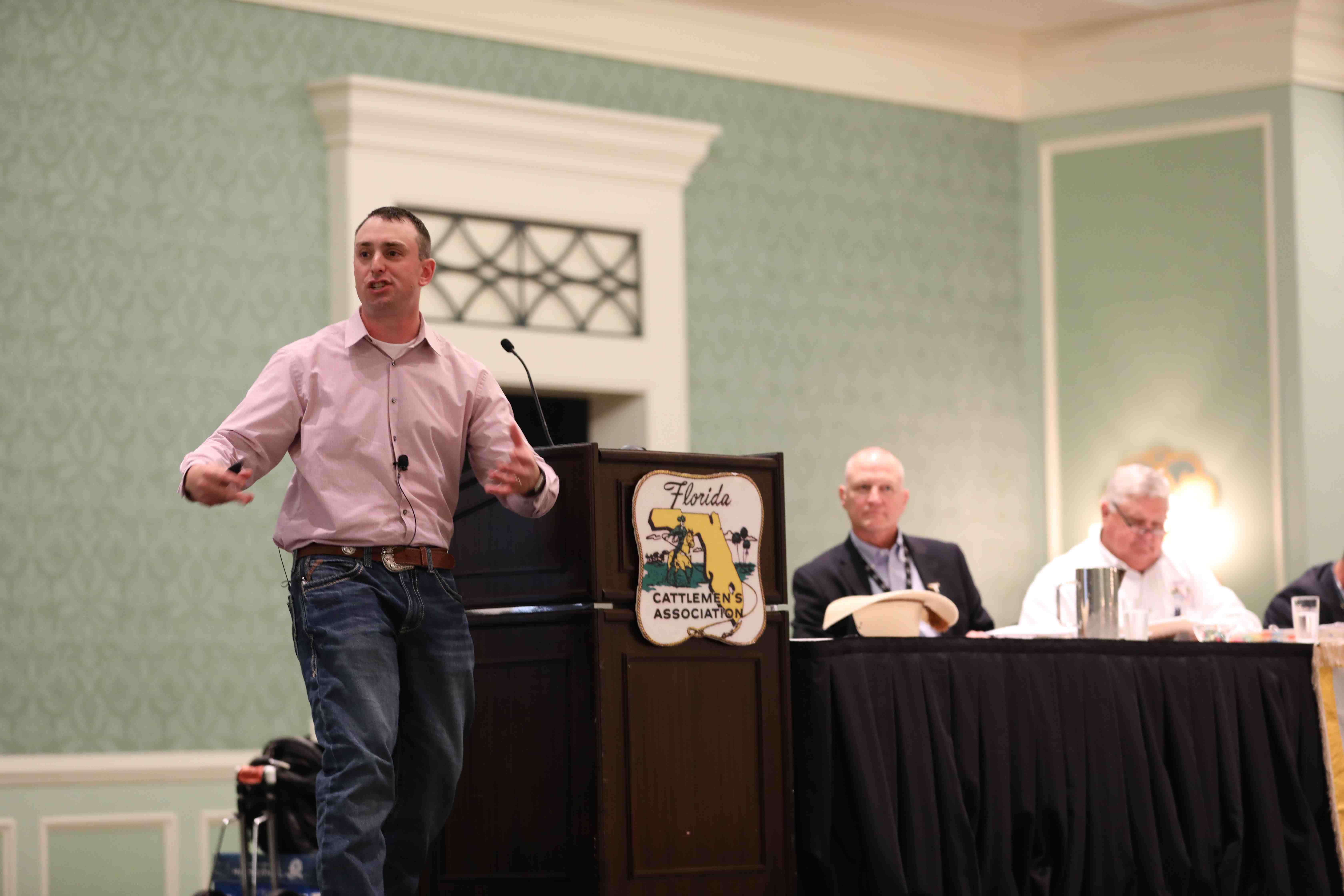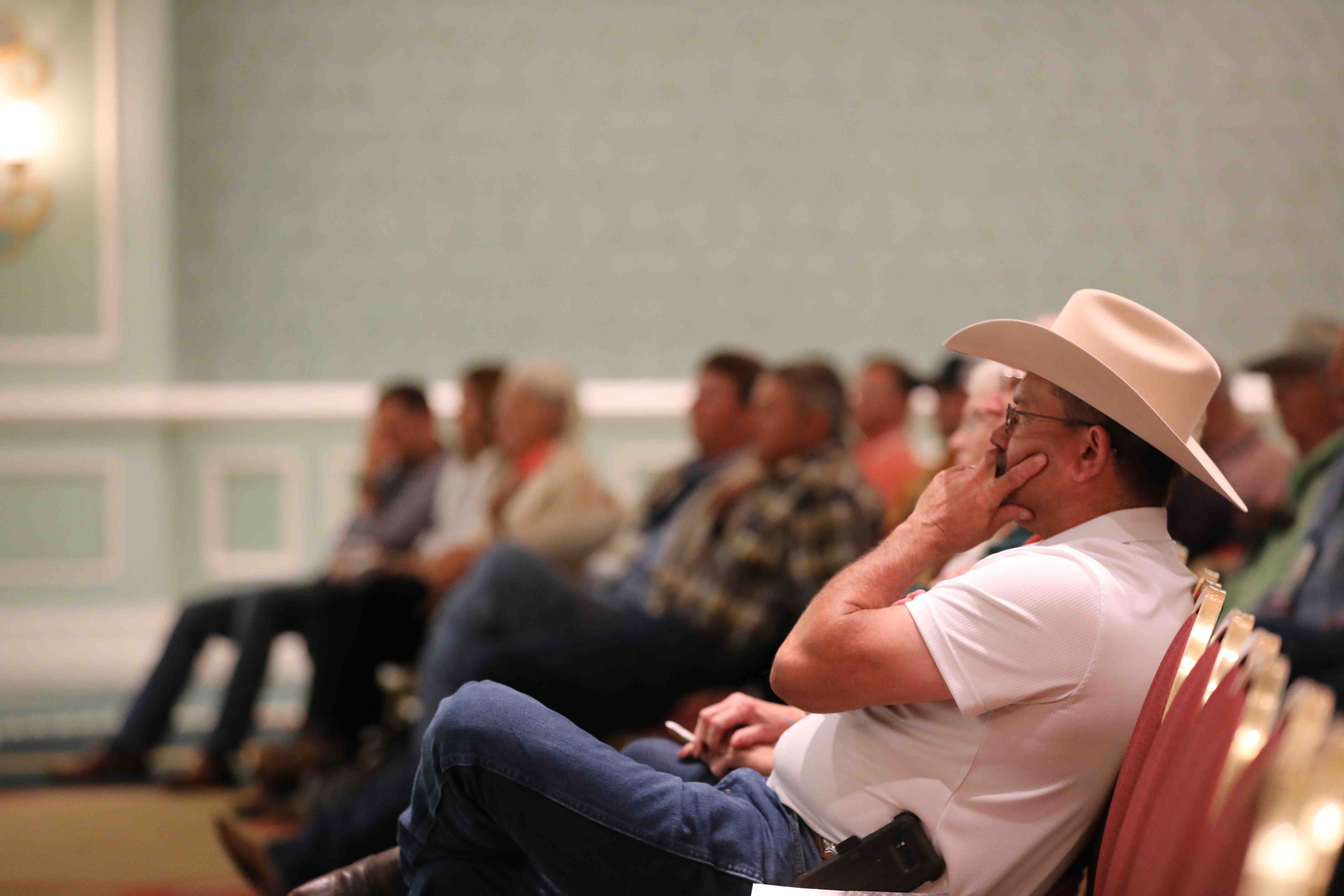
As a kid my family went on two trips a year.
One to visit relatives up north (this one, not even a guarantee), the other to the Florida Cattlemen’s Association’s Annual Convention.
What may have been work for my parents was vacation for us kids. We swam, we danced, we played and we hung out with folks a lot like us.
So you can imagine my joy when former co-worker Dr. Phil Bass (now at the University of Idaho) agreed to speak at our opening general session this year. Tasked with sharing insight from his own meat science background back to the rancher, I was all ears.

Here are some takeaways for all cattlemen:
No matter the environment, cattle should improve
Environmental obstacles stand in the way of consumer demand, but well-managed herds overcome them. “We have to remember that cows don’t just walk all over the range and into a steak house,” Dr. Phil said. “Something has to happen in between.” It’s up to ranchers to improve their herds to satisfy consumer’s palettes. They’re set to make more profit in doing so.
Consistency is key
How many times have we heard those words? From the butcher, chef, restaurant patron and everyone in line before them, this message isn’t going anywhere because it matters. If the harvest process becomes inefficient, beef becomes less affordable for the end user making protein choices every day.
Taste or else
The benefit that beef has is taste, Dr. Phil said. That’s our leg up on the competition. To harness that, we need to understand that eating, even purchasing beef, is an experience – one we use most of our senses to do. “If we as a beef community do not deliver something that tastes good, we won’t have to worry about raising cattle. We have to deliver what the consumers want.”
Targeted management
No matter their home, cattle can reach a quality endpoint if the right decisions are made and put into action. Talk to local university animal scientists, he said, to figure out how best to reach your goals. “You can put these magical creatures just about anywhere to eat grass and turn it into meat. Wow, we should be excited about that. That’s miraculous!”

It can feel like an uphill battle, particularly for those who sell at weaning for a price per pound. But we’re all in this together, within an industry defined by resilience and improvement. The signals are there for the live cattle and meat side to work together, packer and rancher with the same goal.
“You have to have the balance, you have to have the pounds but then you also have to have the marbling to go along with it. The quality. The consistency,” Dr. Phil said. “That’s so the grocery-store consumer who doesn’t understand the meat business and beef community can at least trust what they’re buying.”
Doctor’s orders.
Thanks for allowing me to tell your story,
Laura
You may also like
Not perfect, but working to get better
The CAB Cattleman Connection team heard its name called more than once in the virtual ceremonies, and each time came a sense of personal accomplishment, but even better: confirmation that we’re getting better at our craft. I hope that means we’re doing a better job for you.
Flavor’s secret ingredient
As a moderately to highly heritable trait, marbling is something that cattlemen have a lot of ability to manage. It also happens to be one of the major contributors to beef flavor. Texas Tech University meat scientist Jerrad Legako spoke about the topic at the 2020 American Society of Animal Science meetings.
Beefed up findings
Frank Mitloehner presents his findings on the animal ag sector’s impact on global warming. He explains how cattle counterbalance other fossil fuel sectors, proving that cattle are a solution and not a threat.



